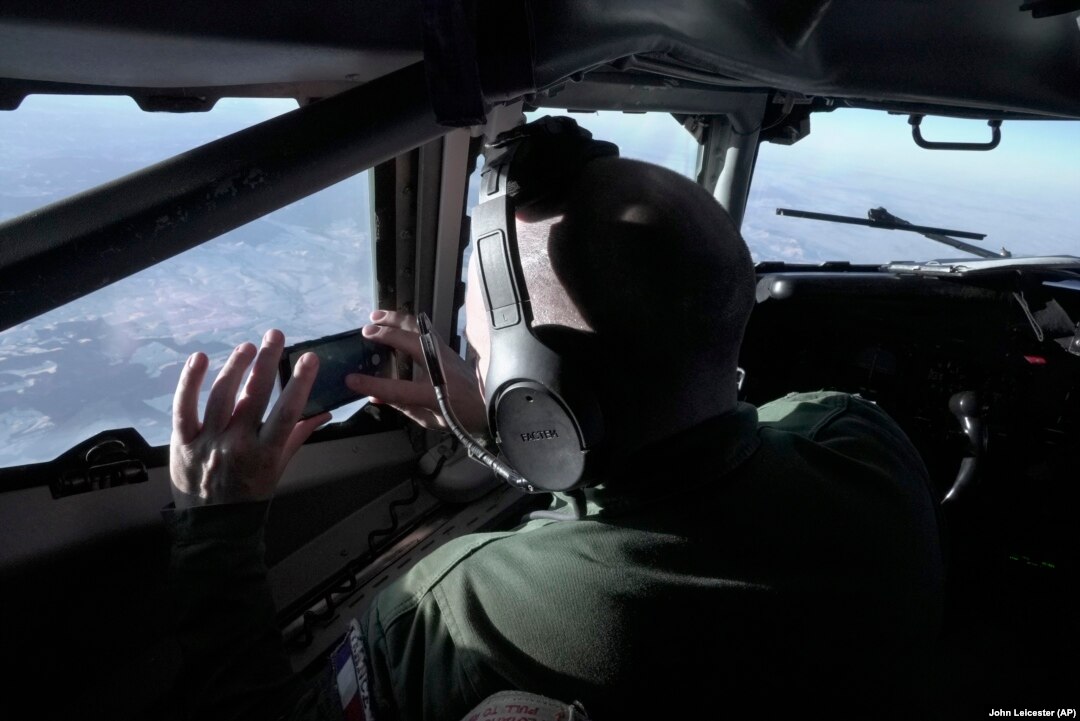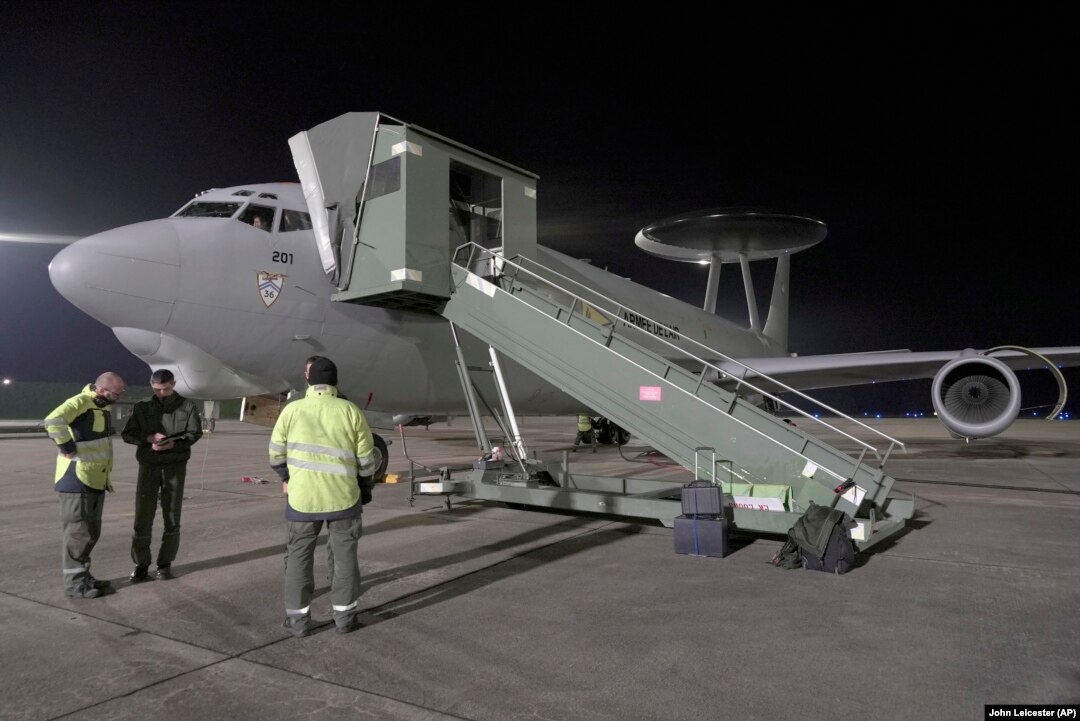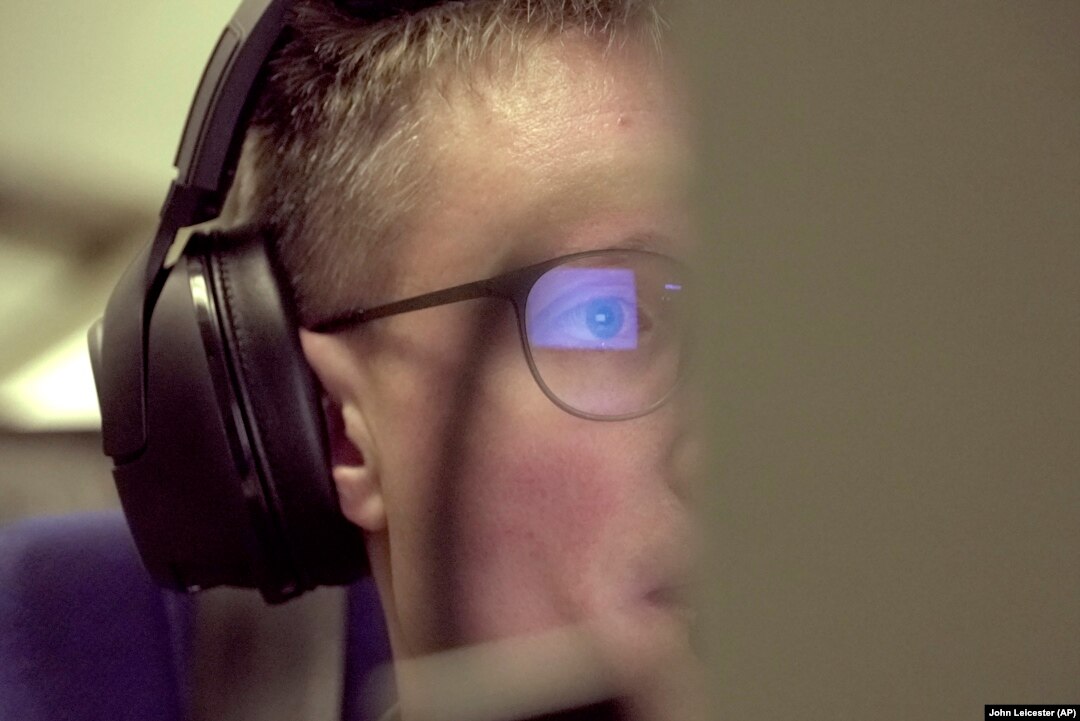God's Eye View: Secretive Surveillance Flights Keep Watch Over Russian Activity

A crew member snaps a souvenir photo from the cockpit of a French military Airborne Warning and Control System (AWACS) surveillance plane as it flies a 10-hour reconnaissance mission from central France to Romanian airspace and back on January 9.
Its mission as it peered across southern Ukraine and the Black Sea to Russian-occupied Crimea and beyond was to collect real-time ground-based intelligence for the NATO military alliance.

With 26 military personnel, the French AWACS aircraft can fly for up to 12 hours without refueling at an altitude of 10 kilometers.
It effectively paints a do-not-cross line in the skies of Europe with its sustained presence high above eastern Romania, where it can be seen by Russian forces. The AWACS also serve as a warning to Russia that NATO is closely monitoring the war on its borders.

From the back of the plane, military technicians monitor data on their screens
With a powerful radar that rotates six times every minute on the fuselage and a bellyful of surveillance gear, the plane can spot missile launches, airborne bombing runs, and other military activity from the conflict.
France's four AWACS are among a variety of surveillance aircraft, including unmanned drones, that gather intelligence for the 31-member NATO alliance.
The commander, a lieutenant colonel named Richard, talks to a crew member during the mission.
The "ultimate goal is, of course, no conflict and deterrence," said the commander who did not disclose his surname due to security concerns. "We can detect aircraft, we can detect UAVs, we can detect missiles, and we can detect ships. That’s true, for sure, in Ukraine, especially when we are at the border," he added.
Crew members break for refreshments in the galley.
NATO also has its own fleet of 14 AWACS that are also modified Boeing 707s that first flew in 1957 but stopped carrying passengers commercially in 2013. It says one AWACS can surveil an area the size of Poland; three can cover all of Central Europe.
Lieutenant Colonel Richard talks to crew members aboard the plane.
Regular surveillance flights, together with fighter patrols, ground-based radar, missile batteries, and other hardware at NATO's disposal form what the commander of France’s AWACS squadron described as "a shield" against any potential spillover.
As the plane loitered and scanned, the crew detected a distant Russian AWACS above the Sea of Azov, many hundreds of kilometers away on the Crimean Peninsula's eastern side.
"We know that they see us, they know that we see them. Let’s say that it’s some kind of a dialogue between them and us," the French co-pilot said. Russian planes haven’t intercepted a French AWACS "for a long time" and if they did, French pilots would try to defuse any tension.
"Our orders are to be, let’s say, passive," he said. "For a civilian, let’s say 'polite.'"

